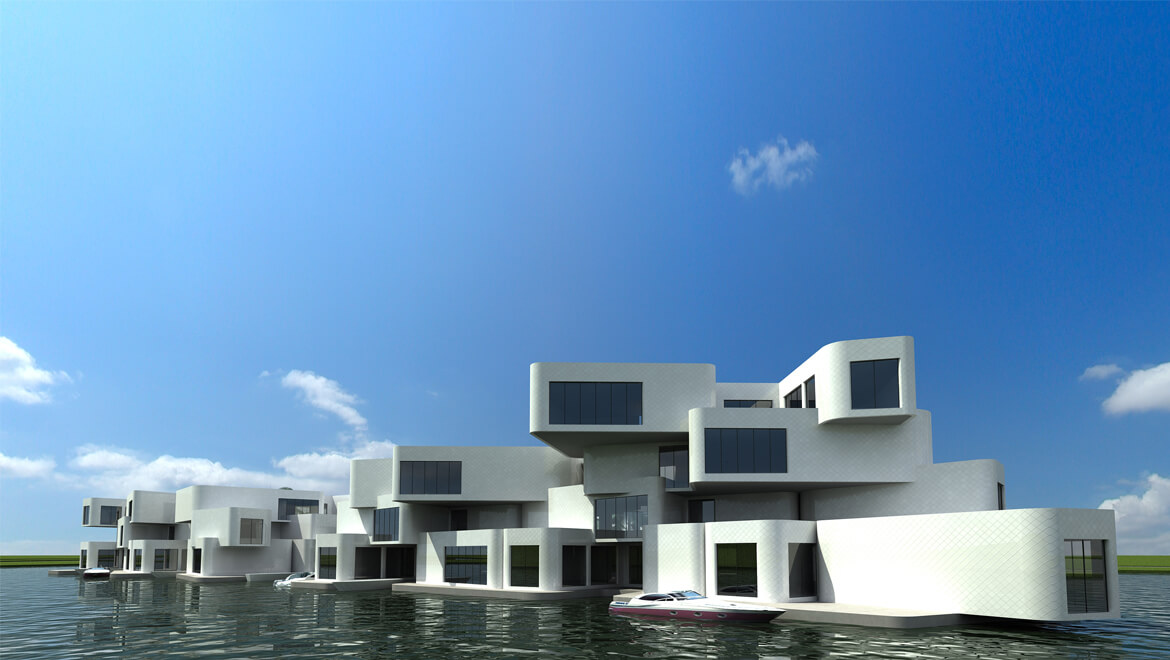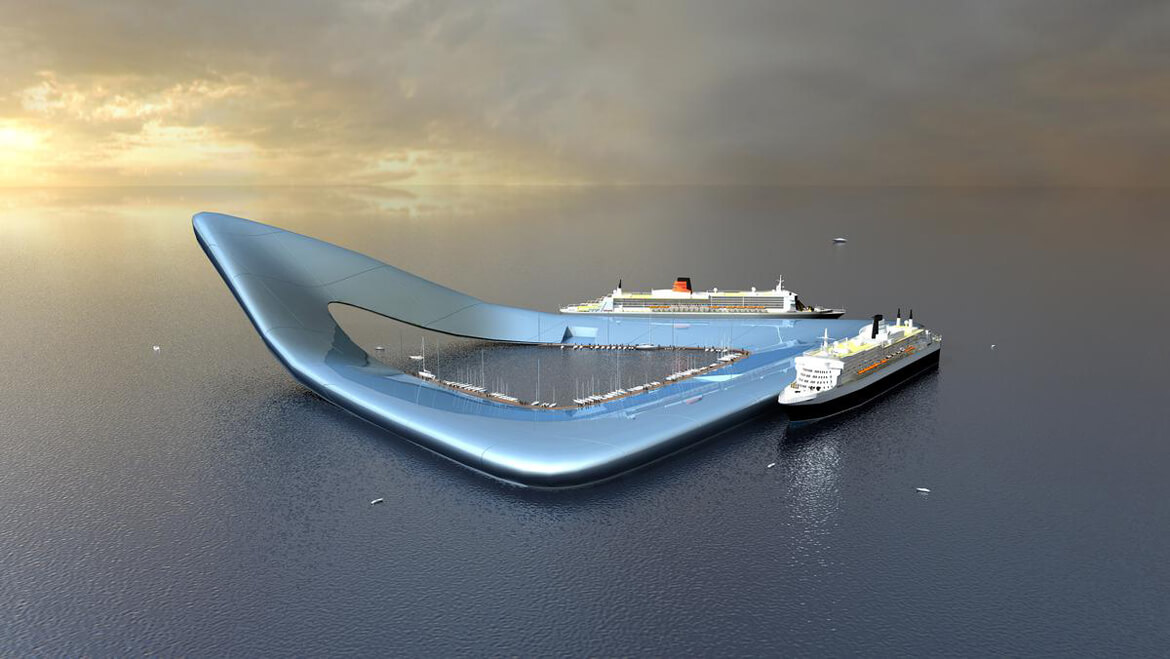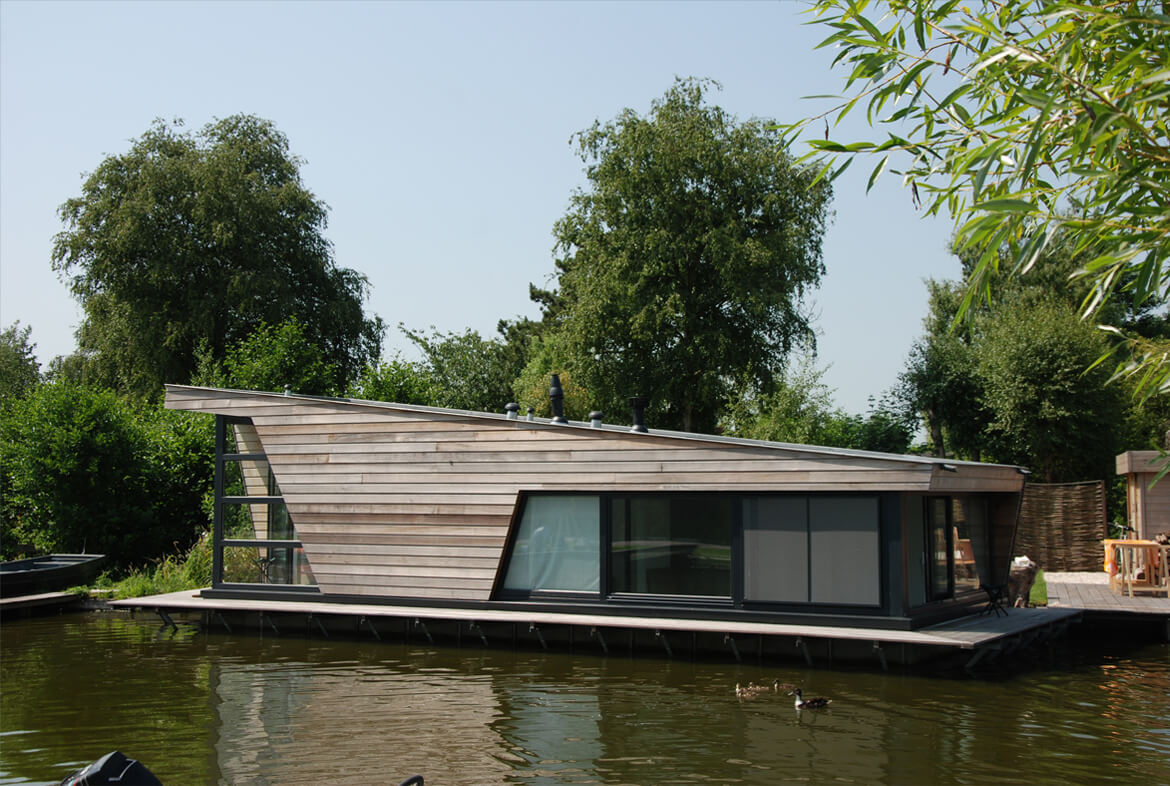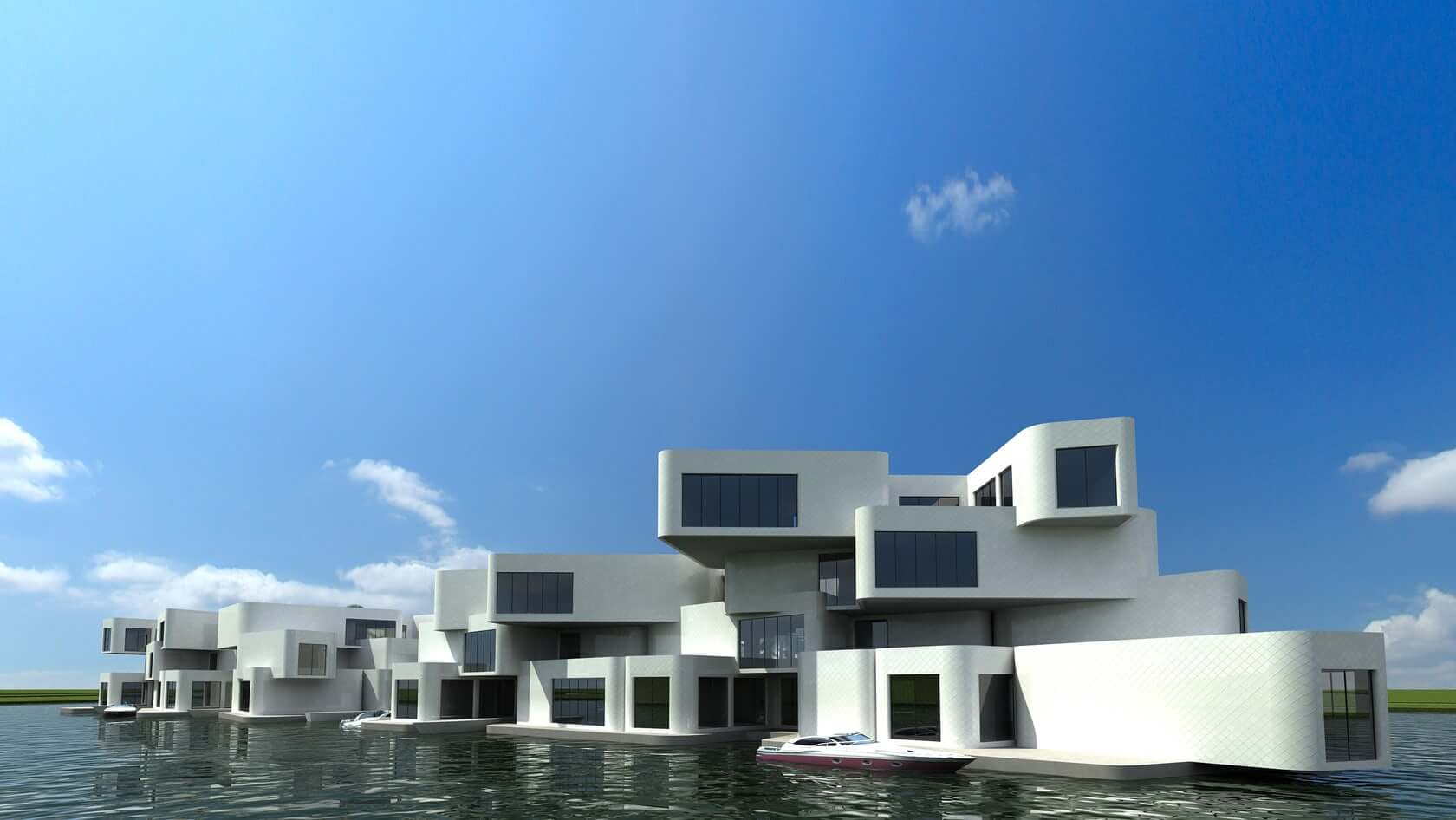
The New York Times, Kate Ross
PARIS — It might seem to be a futuristic scene like the one depicted in Kevin Reynolds’s 1995 movie “Waterworld.” But floating pavilions and cities may in fact help communities adapt to the effects of climate change, as well as meet the challenges of ever-rising real estate prices and congestion in urban areas.
From single homes to office blocks and even roads, the construction of floating cities could make low-lying nations habitable amid dramatically rising sea levels and storm surges, according to DeltaSync, a design and research company that specializes in floating urbanization.
Sea levels rose as much as 20 centimeters, or 7.8 inches, over the course of the 20th century, and the Intergovernmental Panel on Climate Change estimates a rise of 18 to 59 centimeters by 2099. In low-lying, heavily populated deltas used for agriculture, like those in Bangladesh, China and Egypt, such rises will have a devastating impact.
“Currently, for the first time in human history the amount of people that live in urban areas is larger than the amount that live in rural areas,” said Rutger de Graaf, founding partner and research director at DeltaSync. “The degree of urbanization is expected to rise further toward 70 percent in the 21st century.”
Eleven of the world’s 15 largest cities are built on coastal estuaries. The two largest, Shanghai and Mumbai, have populations of 19.21 million and 13.83 million, respectively, and such rises in sea level would have disastrous consequences for both. In India alone, land losses could range from 1,000 to 2,000 square kilometers, or 385 to 770 square miles, by 2030, destroying as many as 150,000 livelihoods, according to the United Nations Food and Agriculture Organization.
As traditional land use or creating landfills is not a sustainable answer to the unpredictable effects of climate change, DeltaSync believes floating-city technology offers a better solution. In countries like the Netherlands, where approximately half of the land lies less than a meter above sea level, such technology is a viable alternative to repeated raising of dikes, which must be altered in accordance with rising sea levels. Floating constructions naturally rise with the water level, negating the need for adjustments or rebuilding.
Floating pavilions are also a less risky option, as dikes may be in danger of eroding, shifting or even eventually tearing open, unleashing floodwaters of devastating destruction.
Floating cities could also be a practical solution to overpopulation and congestion, opening up the possibility of more space for civilian housing and public buildings. In New York City, almost half of all high school students were studying in overcrowded conditions in the 2008-9 school year, according to the Independent Budget Office, which provides nonpartisan budget information about the city. Creating a floating facility could be a practical answer to such congestion-related problems.
“Constructing floating buildings is a promising solution,” Mr. de Graaf said. “It enables multifunctional use of space in densely populated areas, without further increasing flood risk.”
The world’s first floating pavilion was built in Rotterdam. It was constructed as a response to the city’s objectives to reduce CO2 emissions by 50 percent and to ensure that Rotterdam remains climate-change resilient in the future.
“Twelve months ago, all we had was a sketch, a plan, and the drive to make it work,” said Rob Tummers, building director of Dura Vermeer, the construction group behind the pavilion, when the structure was formally unveiled to the public on June 26. “The laws and regulations required to build it had yet to be developed and adopted.”
The construction, which took just six months to complete, was built directly on the water, rather than on a dry dock. It serves as an exhibition and reception space focusing on Rotterdam’s water management, climate change and energy. The pavilion is 12 meters high, with a floor space the size of four tennis courts, and can accommodate approximately 500 visitors. It has a plaza and dome section, including an auditorium that can seat up to 150 guests. Although it can be moved, it will remain moored in the Rijnhaven port for five years.
Paula Verhoeven, Rotterdam’s climate director, called the project “remarkable,” noting that it demonstrates Dutch “ability to realize sustainable and climate change resilient constructions.”
To ensure that the pavilion remained lightweight and thus unsinkable, it was constructed using five layers of expanded polystyrene sheets, the thinnest layer measuring 20 centimeters and the thickest 75 centimeters, and made buoyant by tiny air-permeated cells. The thickest layer contained a grid of concrete beams and was fastened to prefabricated concrete slabs, forming the hard shell of the island and acting as a protection against waves. The subsequent addition of a 20-centimeter-thick concrete floor made the island’s total thickness 2.25 meters and rendered the floating island a rigid unit.
“Building three to four levels high is possible without problems,” Mr. de Graaf said, addressing concerns about the stability of the structure. “Higher can be done, but it requires larger platforms than the building footprint or more depth to stabilize.”
In order to continue to keep the weight to a minimum, the domes of the pavilion were clad with special ETFE foil, a transparent material that is approximately 100 times lighter than glass. The pavilion is connected to the mainland by a footbridge.
The construction also implements a Thermal Energy Storage system, with layers of water acting as insulation for the storage facility, maintaining a sustainable energy and hot water supply through solar panels. Water is collected through rain-water harvesting, or by drawing from the large reserve on which the pavilion floats. Subsequent constructions would adopt similar techniques, with the goal that floating cities be self-sufficient in terms of both water and energy supply, relying on solar energy and surface water. Even the toilet water will be purified by its own system.
Mr. de Graaf, also a civil engineer, is in talks with officials in New York and other cities. “We are talking about starting up a data collection study to gain more insight in the water quality aspects of building on water,” he said. “Water in lakes and old port areas are perfect because of the gentle wave conditions.”
Rotterdam’s pioneering model could be the first of many to come, as such projects are not unique to DeltaSync. Waterstudio.NL , an architectural and city planning company, has unveiled similar innovations to build floating structures. Its master plan, called Het Nieuwe Water, or The New Water, is geared toward “a new relationship with the water.” The project was presented to the 2009 World Architecture News Awards and is “one of the leading projects of architectural homes,” according to its architect, Koen Olthuis.
The project includes a total of 1,200 new houses, of which some 600 will be floating. The planned area of development is one of the lowest areas of the Netherlands, between The Hague, the North Sea beach and Rotterdam, on land reclaimed from the sea. It once housed greenhouses, but these have now been cleared to make way for the project.
“The building work will be completed on dry land,” Mr. Olthuis said. “Afterwards, we break down the dikes and let water come in.”
The first stage of the project will be construction of Citadel, the world’s first floating apartment complex, with a planned 60 luxury apartments, including parking spaces and large terraces. The New Water is scheduled for completion by 2017.
Click here to read the article
Click here for the website



























